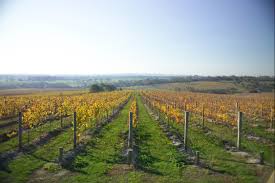If only life could be so easy. In many parts of the world, population centers and water supplies are not located in the same place. Areas from California to China go to great lengths and costs to move water from where it is (relatively) abundant to the population centers and farmland. One of the largest diversion projects in the world, China’s South-North Water Transfer Project just opened its second branch to the Beijing area in December. The project theoretically will bring almost 12 trillion gallons of water from the Yangtze River Valley north to the mega-cities surrounding Beijing. But the project will also bring with it controversy – mainly over the sustainability of this water supply and the pollution issues that already plague China’s dwindling water supplies. Continue reading

City Slickers Come to California’s Central Coast:
Harvard’s Continuing Education in California Groundwater Rights
On January 22nd, Reuters posted an article “Harvard Buys Water Rights in Drought-Hit Wine Country.” An email flurry broke out with seemingly everyone in my contact list sharing a link. The article reported that the Harvard Endowment “has quietly become one of the biggest grape growers in California’s drought-stricken Paso Robles wine region, securing water well drilling permits to feed its vineyards days before lawmakers banned new pumping.” According to Reuters, a wholly-owned subsidiary of the $36 billion Harvard Endowment Fund has spent more than $60 million to acquire 10,000 acres in Santa Barbara County and San Luis Obispo County since 2012. Harvard’s entity now numbers among the top 20 wine growers in Paso Robles.
Reuters asks was Harvard’s move a “well-timed water play”? Is it? Nope. Instead, it is covering itself from investing in vineyards in a region with a rapidly increasing groundwater overdraft problem. Continue reading
A Look at Colorado’s 2015 Water Plan
Colorado’s water situation looks much less dire in 2015 than it did two short years ago. In February, 2013, exceptional drought covered almost 25% of the Centennial State. Severe drought covered 100% of the state. When we fast forward to today, the situation fortunately is much less dire. (please see the map below for details.) Some portions of Southeastern Colorado face extreme drought conditions. The severe drought that covered the entire state two years ago now only covers 12.26%. However, Colorado is not resting on its laurels to plan for future water crises. Continue reading
The Implications of the Drought in the Colorado River Basin on Arizona’s Water Supply
The most recent US Drought Monitor released on December 30th finally shows a small glimmer of improvement for California’s drought. Over the last few weeks, a series of major storms dropped significantly higher than normal rains across much of Northern California. In fact, rain in some major Bay Area cities fell at the fastest clip ever recorded there. Oakland received 455% higher than average rainfall in December. San Francisco recorded 424% higher than average rainfall, and San Jose recorded an astonishing 736% of its average rainfall this December. Unfortunately, all of this rainfall put only a small dent in the drought conditions that mire the state. According to the US Drought Monitor, exceptional drought covers 32.21% of the state this week versus 55.08% at the beginning of the December. Continue reading
